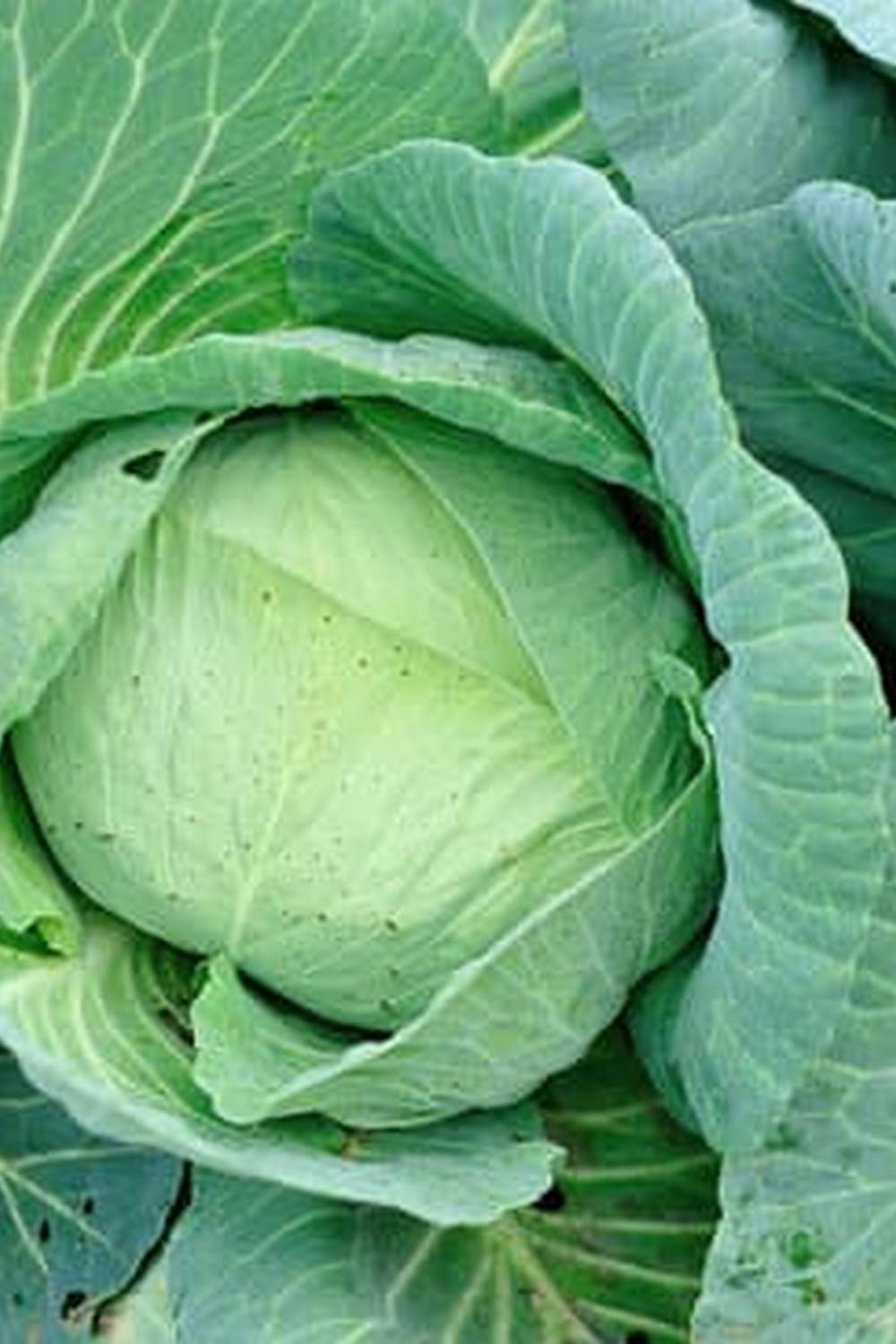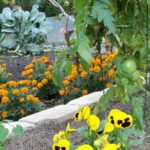As autumn arrives, gardeners in the Texas Hill Country eagerly anticipate the opportunity to plant and cultivate a variety of vegetables in their gardens. Fall vegetable gardening in this region presents a unique set of challenges and rewards, making it an exciting time for both novice and experienced gardeners alike. With the right knowledge and preparation, individuals can enjoy a successful harvest during this season.
When it comes to fall vegetable gardening in the Texas Hill Country, selecting the right vegetables is crucial. Understanding which crops thrive in the cooler temperatures of autumn can help ensure a bountiful harvest. From leafy greens like kale and spinach to root vegetables such as carrots and beets, there are plenty of options to choose from for your fall garden.
In addition to choosing the appropriate vegetables, preparing the soil is essential for successful fall planting. Amending the soil with compost or organic matter can improve drainage and fertility, providing a healthy environment for your plants to grow. By taking the time to properly prepare your garden beds, you can set the stage for a productive fall vegetable gardening season in the Texas Hill Country.
Choosing the Right Vegetables for Fall Gardening in Texas Hill Country
When it comes to Texas Hill Country vegetable gardening in the fall, selecting the right vegetables is essential for a successful harvest. Some ideal choices for fall planting in this region include leafy greens like spinach, kale, and lettuce, which thrive in the cooler temperatures. Root vegetables such as carrots, radishes, and turnips also do well in the Texas Hill Country during the fall season. Additionally, consider planting broccoli, cauliflower, and Brussels sprouts for bountiful autumn crops.
One important aspect to keep in mind when choosing vegetables for your fall garden is the average first frost date in the Texas Hill Country. By selecting varieties that have a shorter maturity time or are more cold-tolerant, you can ensure that your plants have enough time to mature before the first frost hits. For example, opt for quick-growing lettuces or radishes if your first frost typically arrives earlier in the season.
| Vegetable | Ideal Planting Time |
|---|---|
| Spinach | August-September |
| Carrots | August-September |
| Broccoli | July-August |
| Kale | August-September |
By carefully selecting a variety of vegetables that are well-suited to the fall growing conditions of the Texas Hill Country and planting them at the appropriate times, you can enjoy a bountiful harvest throughout autumn. Remember to consider factors such as temperature fluctuations and frost dates when planning your fall vegetable garden to maximize your success.
Preparing Your Soil for Fall Planting
As you prepare to plant your fall vegetables in the Texas Hill Country, ensuring that your soil is in optimal condition is crucial for a successful harvest. Here are some essential steps to take when preparing your soil for fall planting:
- Test your soil: Before planting any new crops, it’s important to test your soil to determine its pH level and nutrient content. You can use a home testing kit or send a sample to a local extension office for more accurate results.
- Amend the soil: Based on the results of your soil test, you may need to amend your soil with organic matter such as compost, well-rotted manure, or other natural fertilizers. This will help improve drainage, fertility, and overall soil health.
- Till the soil: Once you have added any necessary amendments, it’s time to till the soil thoroughly. This will help incorporate the organic matter into the existing soil and create a loose, aerated bed for planting.
In addition to these steps, consider practicing crop rotation in your garden beds to prevent nutrient depletion and minimize pest and disease problems. By rotating your crops each season, you can maintain a healthy balance in your soil while also reducing the risk of issues that may arise from continuous planting of the same vegetables.
Remember, proper soil preparation is the foundation of a successful fall vegetable garden in the Texas Hill Country. Taking the time to assess and improve your soil quality before planting will set you up for a bountiful harvest later in the season. So roll up your sleeves, grab your gardening tools, and get ready to dig deep into the beauty of fall gardening in this unique region.
Essential Tools for Successful Fall Vegetable Gardening
Fall gardening in the Texas Hill Country requires some essential tools to ensure a successful harvest. One of the most crucial tools is a high-quality watering system. With the unpredictable weather patterns in the region, having a reliable way to water your vegetables is key. Consider investing in soaker hoses or drip irrigation systems to efficiently deliver water directly to the plants’ roots, reducing evaporation and waste.
Another important tool for fall vegetable gardening in the Texas Hill Country is a good set of gardening gloves. As you prepare the soil, plant seeds, and harvest your crops, having durable gloves will protect your hands from thorns, sharp edges, and soil-borne pathogens. Look for gloves that are comfortable, breathable, and provide a good grip to handle tasks effectively.
A sturdy hand trowel or shovel is also essential for fall gardening. Whether you’re transplanting seedlings, digging furrows for planting seeds, or harvesting root vegetables, having a reliable digging tool will make your work easier and more efficient. Choose a tool with a comfortable handle that suits your hand size and gardening style to avoid fatigue and strain during long hours in the garden.
| Essential Garden Tool | Importance |
|---|---|
| High-quality watering system | Efficiently delivers water to plants’ roots |
| Gardening Gloves | Protects hands from thorns and soil-borne pathogens |
| Sturdy hand trowel or shovel | Makes planting, transplanting, and harvesting easier and more efficient. |
Having these essential tools on hand will set you up for success in your fall vegetable garden in the Texas Hill Country. With proper irrigation equipment, protective gear for your hands, and reliable digging tools, you can enjoy bountiful harvests while making your gardening tasks more manageable. Invest in quality tools that suit your needs and preferences to make your fall gardening experience enjoyable and productive.
Best Practices for Watering and Irrigation in the Fall
When it comes to maintaining a successful fall vegetable garden in the Texas Hill Country, proper watering and irrigation practices are crucial. The changing weather patterns and cooler temperatures of fall require adjustments in how you keep your vegetable plants hydrated. To ensure your plants thrive during this season, here are some best practices for watering and irrigation.
Understanding Water Needs
Different vegetables have varying water requirements, so it’s important to understand the specific needs of each plant in your garden. In the Texas Hill Country, where temperatures can still be warm during the fall, some vegetables may need more frequent watering than others. Leafy greens like lettuce and spinach generally require consistent moisture, while root vegetables such as carrots and beets need less frequent but deep watering.
Timing Is Key
In the fall, temperature fluctuations can lead to evaporation of moisture from the soil. To prevent water loss and ensure that your plants receive adequate hydration, schedule your watering sessions appropriately. Early morning is often the optimal time to water your garden as it allows plants to absorb moisture before the heat of the day kicks in. Avoid watering in the evening to prevent issues like fungal diseases caused by prolonged moisture on plant leaves.
Utilizing Efficient Irrigation Methods
To conserve water and promote healthy root development, consider using efficient irrigation methods such as drip irrigation or a soaker hose system. These methods deliver water directly to the base of plants, reducing wastage through runoff or evaporation. Mulching around plants can also help retain soil moisture and regulate temperature levels, further aiding in efficient watering practices for your fall vegetable garden in the Texas Hill Country.
Dealing With Pests and Diseases in the Texas Hill Country
When it comes to Texas Hill Country vegetable gardening in the fall, dealing with pests and diseases is inevitable. However, there are several proactive measures that you can take to minimize the damage and ensure a successful harvest. One of the most common pests in the fall garden is aphids, which thrive in the cooler temperatures.
To combat aphids, consider introducing beneficial insects like ladybugs or lacewings to your garden. These natural predators can help keep aphid populations in check without the need for harmful pesticides.
Another common issue gardeners face in the Texas Hill Country during fall gardening is fungal diseases such as powdery mildew or root rot. To prevent these diseases from taking hold, make sure to avoid overhead watering which can create moist conditions ideal for fungal growth.
Additionally, planting vegetables with ample spacing between them can improve air circulation and reduce the likelihood of fungal infections. If you do notice signs of disease on your plants, promptly remove and dispose of infected leaves or plants to prevent further spread.
Organic Pest Control Methods
For those looking to maintain an organic garden, there are several effective pest control methods that don’t involve harsh chemicals. One popular approach is companion planting, where certain plants are grown together to naturally deter pests or attract beneficial insects. For example, planting marigolds near your vegetable crops can help repel pests like nematodes and whiteflies. Additionally, incorporating homemade garlic or chili pepper sprays can act as a natural deterrent against common garden pests.
Monitoring for Early Signs of Pests
Regularly inspecting your plants for early signs of pest infestations is crucial in preventing widespread damage. Look for telltale signs such as chewed leaves, yellowing foliage, or unusual markings on plant stems.
By catching pest issues early on, you can take swift action to address the problem before it escalates. Consider setting up traps or barriers to protect vulnerable plants from crawling pests like slugs or caterpillars that may be active during the fall season in Texas Hill Country vegetable gardens.
Harvesting and Storing Fall Vegetables in the Texas Hill Country
As the fall season approaches in the Texas Hill Country, it is essential to prepare for the harvest of your fall vegetables. Properly harvesting and storing your crops ensures that you can enjoy the fruits of your labor well into the colder months. Here are some tips on how to effectively harvest and store your fall vegetables:
- Harvesting at the Right Time: Different vegetables have varying optimal harvest times, so it is crucial to know when each crop is ready. For example, root vegetables like carrots and beets are best harvested when they reach a desirable size, while leafy greens like lettuce should be picked when their leaves are tender.
- Proper Storage Techniques: After harvesting your vegetables, it is important to store them correctly to maintain their freshness. Some vegetables can be stored in a cool, dark place like a cellar or garage, while others may benefit from refrigeration. Be sure to research the best storage methods for each type of vegetable.
- Cleaning and Preparing for Storage: Before storing your fall vegetables, make sure to clean them thoroughly to remove any dirt or debris. Trim off any damaged or wilted parts of the plants before placing them in storage. Properly preparing your vegetables for storage can help prevent spoilage and extend their shelf life.
With these tips in mind, you can effectively harvest and store your fall vegetables in the Texas Hill Country. By following proper techniques for harvesting at the right time, storing your crops correctly, and cleaning them before storage, you can enjoy fresh produce well beyond the harvest season. Be sure to continue researching specific storage methods for different types of vegetables to make the most out of your fall garden bounty.
Tips for Extending Your Fall Vegetable Gardening Season
One of the keys to successful Texas Hill Country vegetable gardening in the fall is extending your growing season as much as possible. With the right strategies, you can enjoy a bounty of fresh produce well into the cooler months. One way to achieve this is by utilizing season-extending techniques such as row covers, cold frames, and greenhouses. These methods help protect your plants from chilly temperatures, allowing them to thrive even as the weather begins to cool.
Another tip for extending your fall vegetable gardening season is to select cold-hardy crops that can withstand frost and milder winter conditions. Some excellent options for the Texas Hill Country include kale, collard greens, Swiss chard, carrots, beets, and radishes. These vegetables not only tolerate cooler temperatures but often improve in flavor after a light frost. By choosing appropriate crops for the fall season, you increase your chances of enjoying a longer harvest period.
Additionally, implementing succession planting can help you prolong your fall vegetable gardening season in the Texas Hill Country. Instead of planting everything at once, stagger your plantings so that you have a continuous supply of fresh produce throughout the autumn months.
This method ensures that new crops are ready for harvest as older ones are being harvested or reaching the end of their life cycle. With careful planning and attention to detail, you can maximize your garden’s productivity well into fall and beyond in the beautiful Texas Hill Country setting.
Conclusion
Fall gardening in the Texas Hill Country offers a unique opportunity to cultivate a bountiful harvest while enjoying the beauty of the changing season. By carefully selecting the right vegetables, preparing the soil, utilizing essential tools, implementing proper watering techniques, and effectively managing pests and diseases, gardeners can experience a successful and rewarding fall gardening season.
As the temperatures cool and the days shorten, there is a sense of tranquility that comes with tending to a fall garden in this picturesque region.
Despite facing some unique challenges such as unpredictable weather patterns and specific pest issues in the Texas Hill Country, gardeners can overcome these obstacles with proper planning and dedication. By harvesting and storing fall vegetables at their peak freshness, individuals can savor the flavors of their labor well into the winter months.
Additionally, by implementing strategies to extend the fall gardening season, such as utilizing row covers or cold frames, gardeners can continue to enjoy fresh produce even as temperatures drop.
Overall, embracing fall gardening in the Texas Hill Country not only provides an abundance of fresh vegetables but also allows individuals to connect with nature and appreciate the beauty of this vibrant season. Whether you are a seasoned gardener or new to vegetable gardening in this region, fall presents an opportunity to nurture your connection to the land and enjoy the rewards of your efforts.
So grab your gardening gloves, roll up your sleeves, and immerse yourself in the world of fall vegetable gardening in this stunning part of Texas.
Frequently Asked Questions
When Should I Start My Fall Vegetable Garden?
The ideal time to start your fall vegetable garden can vary depending on your location and the specific vegetables you want to grow. In general, starting in late summer or early fall is a good idea to ensure a successful harvest before winter arrives.
Is It Too Late to Plant Fall Vegetables in October?
While October might be considered a bit late for planting some fall vegetables, it’s not necessarily too late for all crops. Quick-growing vegetables like lettuce, radishes, and spinach can still be planted in October and have enough time to mature before the first frost hits.
What Can I Plant in August in Texas?
In August, Texas gardeners can plant a variety of vegetables to ensure a bountiful harvest. Some examples include okra, peppers, southern peas, sweet potatoes, and winter squash. These crops thrive in the warm temperatures of Texas during this month.

If you’re looking to get into vegetable gardening, or are just looking for some tips on how to make your current garden better, then you’ve come to the right place! My name is Ethel and I have been gardening for years. In this blog, I’m going to share with you some of my best tips on how to create a successful vegetable garden.





